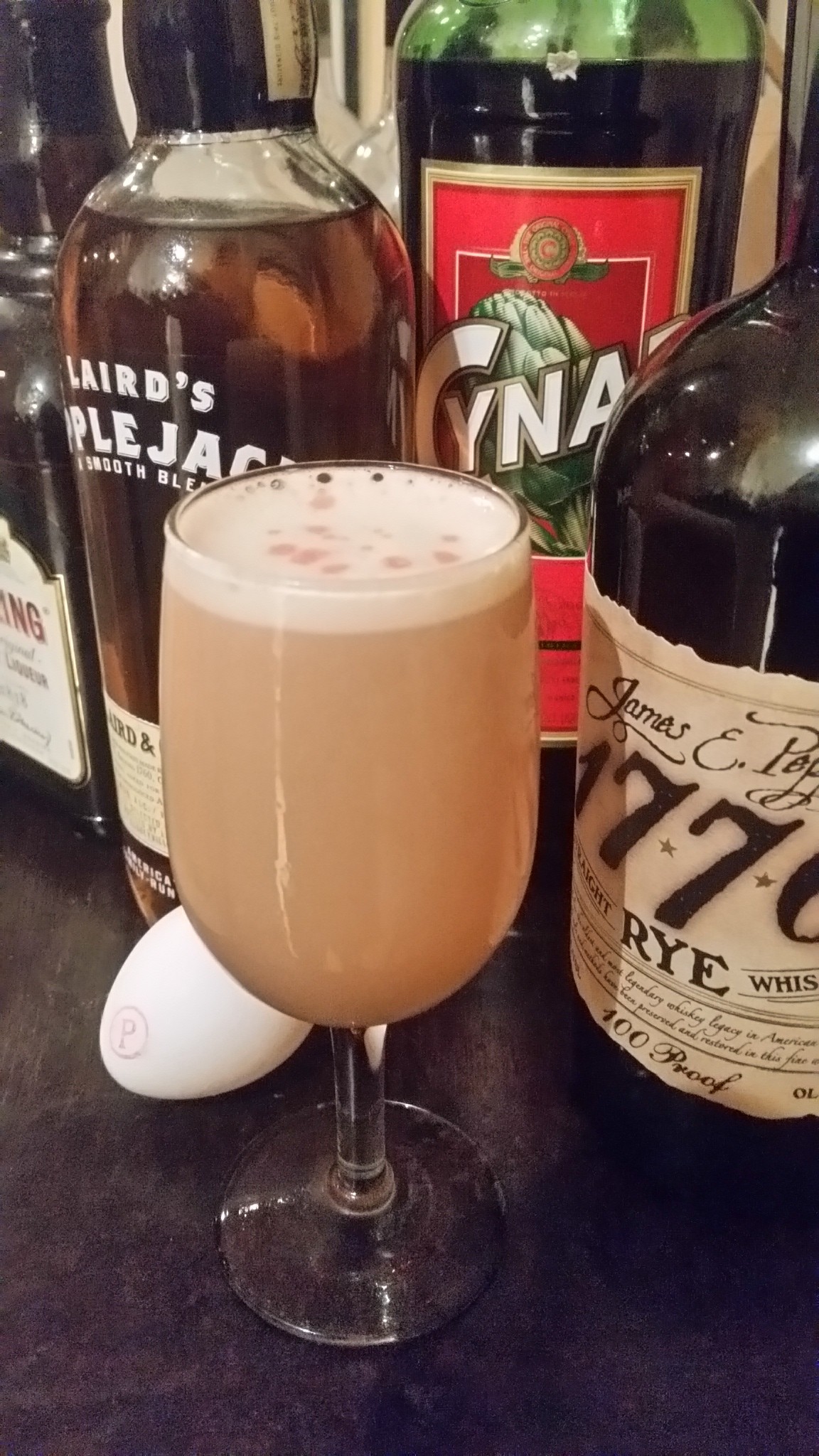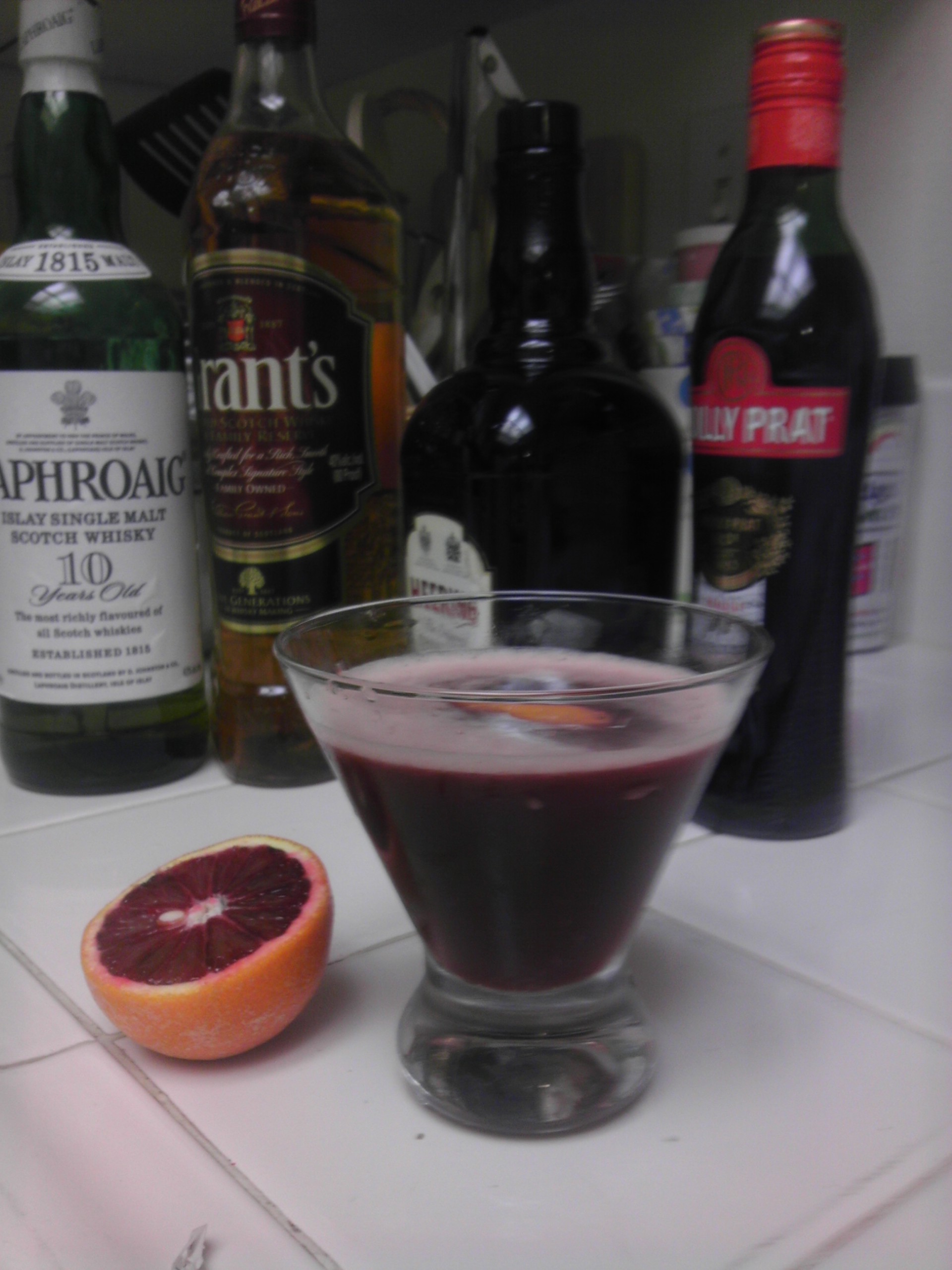Drink of the Week: The Egg (TCM Fest Salute #1)
 Yes, it’s time for another four-part salute to the just now bygone Turner Classic Movies Festival of 2015. For the second year in a row, I’ll be presenting cocktails of my own creation inspired by some of the amazing films I saw this year. (If you’re interested in last year’s selections, start here and work your way backwards.)
Yes, it’s time for another four-part salute to the just now bygone Turner Classic Movies Festival of 2015. For the second year in a row, I’ll be presenting cocktails of my own creation inspired by some of the amazing films I saw this year. (If you’re interested in last year’s selections, start here and work your way backwards.)
We’re starting with a drink inspired by the restoration I was personally most anxious to see, not because it’s a particularly well made film but because it’s such a strong piece of material that all producer Jack L. Warner had to do was buy a Broadway show lock stock and barrel, including all of the original cast, and just throw it up on the screen, which is pretty much exactly what happened.
I speak of 1972’s film version of”1776,” a musical which began with an odd conceit by history teacher turned Brill Building songwriter Sherman Edwards. It suggested that a play about the creation and signing of Thomas Jefferson’s Declaration of Independence should involve singing and some fairly broad comedy along with the more serious history lesson. It’s a childhood favorite I (and a bunch of my friends, for some reason) have carried on into adulthood, and it seems like the perfect inspiration for a drink that’s as messy as our nation’s history. It’s basically a flip, a drink as old school as it gets, while being more than a bit radical in terms of its many ingredients.
Yes, I’ve found yet another excuse to make a drink using the world’s most delightfully controversial cocktail ingredient. That’s because today’s drink takes it’s name from my favorite song in “1776,” which compares to the birth of a nation to the birth of it’s national bird…and you know where little birds come from.
The Egg
3/4 ounce Laird’s Applejack
3/4 ounce 1776 Rye Whiskey
1/2 ounce Cherry Herring
1/2 ounce Cynar
1 teaspoon cherry syrup (Torani)
1 teaspoon raspberry syrup (Torani)
1 whole egg
3-4 drops Peychaud’s Bitters (important garnish)
Combine the egg and all the liquid ingredients other than the bitters in a cocktail shaker. Shake without ice to emulsify the egg. Add lots of ice and shake again, much more vigorously this time. Strain into a chilled wine glass. Wait for just a moment as a small cap of foam will appear at the top of the glass. Add 3-4 drops of bright red Peychaud’s Bitters to the top for color. Toast the many flavors that comprise this problematic but fabulous country.
*******
Now, on to the ingredients. Rye, perhaps even more than bourbon, is probably the most authentically North American whiskey and, well, I simply couldn’t ignore the highly coincidental brand name, 1776. Applejack, basically American-style apple brandy, was largely forgotten until recently but it’s the quintessential early American spirit. A version of it was made and sold by no less than George Washington himself. (Yes, General Washington had little to do with the declaration and is not physically present in the play or film “1776,” but he nevertheless plays an important off-screen/off-stage role.)
The rest of my selections here take their cue from the fact that Declaration of Independence author Thomas Jefferson was a farmer who was personally quite partial to vegetables and fruit over meats and such. Cynar is a bittersweet liqueur that’s well known to the cocktail cognoscenti as being derived from artichokes, which were grown at Jefferson’s Monticello along with, you guessed it, raspberries and cherries. Peychaud’s bitters were selected largely for their bright red/pink color but also because they hail from the city of New Orleans, circa 1830. That capital of cocktailing was, of course, acquired for our great nation a few decades after 1776 by President Jefferson as part of the 1803 Louisiana Purchase
Now, I readily admit that there’s nothing in particular in my drink that represents John Adams, the actual protagonist of “1776,” or the great sage and comedy relief of the piece, Benjamin Franklin. Yet, if you dare to try this drink out for yourself — and I think you really should — you’ll find a lively and enjoyable discussion taking place amongst your taste buds, and these were three men who all definitely had their own distinctive points of view. Unfettered debate, with or without rancor, is the very heart of this nation at its best and, this time, I think it’s also the heart of a good drink. I’ll also say that there is no way on earth this drink would work were it not for the unifying factor of the whole egg, which can paper over a million gustatory conflicts.
If you try the Egg and hate it, well, that’s okay. We can’t win every argument. And maybe the dove or the turkey really should have been our national bird. To find out what I mean, observe the mastery of William Daniels as John Adams, Ken Howard as Jefferson, and the late, great Howard da Silva as Franklin, as they discuss the matter at hand
You can follow us on Twitter and Facebook for content updates. Also, sign up for our email list for weekly updates and check us out on Google+ as well.
Posted in: Entertainment, Food & Drink, Lifestyle, Movies, Vices
Tags: 1776 Rye, Cherry Herring, cocktails, Cynar, Drink of the Week, Happy Hour, Laird's Applejack, Peychaud's bitters, The Egg

 If you notice a sort of philosophic air to this post, let’s say that’s because life and death is swirling around Drink of the Week. People in my sphere are being born and others have made their last appearance after good and long lives, and that’s not all. This will be the final entry in Drink of the Week written before our departure from DOTW Central in exciting Van Nuys and our arrival at what we sure hope will be more permanent digs at DOTW Plaza in exotic North Hollywood.
If you notice a sort of philosophic air to this post, let’s say that’s because life and death is swirling around Drink of the Week. People in my sphere are being born and others have made their last appearance after good and long lives, and that’s not all. This will be the final entry in Drink of the Week written before our departure from DOTW Central in exciting Van Nuys and our arrival at what we sure hope will be more permanent digs at DOTW Plaza in exotic North Hollywood.








